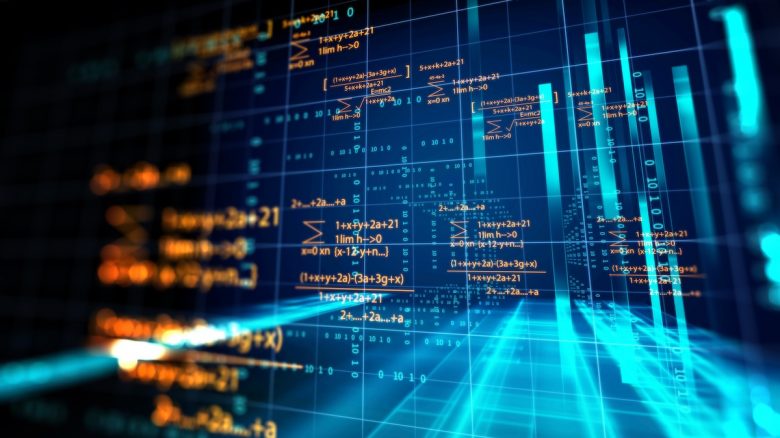
by Nicholas Mitsakos | Artificial Intelligence, Financial Technology, Technology, Transformative businesses, Writing and Podcasts
The collapse of FTX shows how easily crypto is manipulated and the “crypto ecosystem” is fundamentally driven by centralized players and not any true form of decentralized or digital assets. Cryptocurrency is a sideshow and benefits no one other than speculators hoping for a greater fool. However, the combination of digital asset regulation, central-bank cooperation, and distributed assets via decentralized platforms still represents one of the most intriguing opportunities, and, with the potential disruption of global finance, one of the most exciting investment areas today.

by Nicholas Mitsakos | Artificial Intelligence, Book Chapter, Transformative businesses, Writing and Podcasts
A new vision for artificial intelligence is using smaller more relevant data sets for dynamic learning generating more effective outcomes and better predictions. This model uses cognitive architecture, learns, transfers learning, and retains knowledge – enabling more valuable and compelling artificial intelligence applications. This approach is more closely related to the brain’s actual structures and much more effective than “neural networks,” which is a catchy name but the similarity to the brain’s actual functioning is in name only. Real advancement in artificial intelligence must live in reality, not theoretical marketing. The current state of artificial intelligence shows the shortcomings of big data and trial-and-error approaches. A new AI vision can be a more effective solution. Smaller data sets, more relevant information, dynamic data, and algorithms will lead to more appropriate outcomes, better tools, and more effective applications.

by Nicholas Mitsakos | Artificial Intelligence, Biotechnology, Book Chapter, Finance, Financial Technology, Investment Principles, Technology, The Market, Writing and Podcasts
The onslaught of market-making bad news seems almost a daily event. A gloomy picture of slowing economic growth, elevated inflation, and confusing fiscal and monetary policy has added a lethal mixture to the market’s performance. Fiscal stimulus is sidelined, and monetary policy is constricting economic growth and entrepreneurial innovation. It makes for a gloomy outlook and an even more depressing long-term perspective. The next 10 years look more like a lost decade. High-growth company valuations have been significantly discounted, and over time as discount rates drop, their valuations are likely to increase substantially. Higher-yielding fixed income securities will be a standout performer as interest rates are reduced, the higher-yielding BDCs, REITs, leveraged loan securities, and high cash flow instruments, along with high-dividend equities, will prove extremely attractive and are currently available at bargain prices. Providers of value and users of value will be the winners for the next decade. Those generating real cash flow and disruptive innovation will define the next decade.

by Nicholas Mitsakos | Investment Principles, Technology, Transformative businesses, uncertainty, Writing and Podcasts
Predictions usually end up being nonsense. We simply draw a trajectory from what we know today. But innovation is a discontinuity. Things are unpredictable because innovation does not come from consensus thinking. It comes from small groups and individuals with a spark of entrepreneurship, intelligence, and vision. One of the fundamental tenets of predicting technology is that most forecasters get things spectacularly wrong.

by Nicholas Mitsakos | Artificial Intelligence, Economy, Green Energy, Public Policy, Technology, uncertainty, Writing and Podcasts
The rewards for innovative success have become enormous and unpalatable, especially among the five technological giants (Amazon, Apple, Facebook, Google, and Microsoft) forcing these firms to spend absurd amounts of money on lobbying in Washington DC. It’s an expensive and wasteful distraction, but essential in this brave new world. If nothing else, it clogs innovation. It is to our detriment – and the world is literally burning while politicians fiddle – and even more disastrously – impede innovative activity. Applying friction to free thinking and new ideas never ends well.

by Nicholas Mitsakos | Economy, Technology, uncertainty, Writing and Podcasts
Brilliance combined with quirkiness and rule-breaking perpetuates an image of daring entrepreneurs and risk-taking capitalists generating outsized wealth. This simply doesn’t happen unless what is created matters. While we might question how much one needs to play a videogame or interact with social media, an advanced society needs advanced solutions to the intractable problems it faces. As John F. Kennedy said, “Our problems are man-made, mankind can solve them, as well.” Perhaps. The harsh reality is that brilliant, hard-working entrepreneurs and thoughtful investors lose much more often than they win. We need their risk-taking and willingness to lose. It’s how we win. We need the benefits technological innovation delivers even if we don’t understand that innovation’s ultimate purpose.

by Nicholas Mitsakos | Artificial Intelligence, Biotechnology, Book Chapter, Technology, Transformative businesses, Writing and Podcasts
Innovation is unpredictable and astonishing – it can address the world’s most critical issues today, from hunger to efficient energy, to devastating diseases. It is also too often misguided, inefficient, and meaningless – creating nothing more than distractions and wastes of time cloaked in an image of technological wonder. Misguided and manipulative business plans sit side-by-side with the groundbreaking disruptions that may address society’s greatest problems.

by Nicholas Mitsakos | Artificial Intelligence, Biotechnology, Financial Technology, Green Energy, Health Care, Investments, Public Policy, Technology, Transformative businesses, Writing and Podcasts
Remarkable things can happen. Or not. Can we solve climate change, food shortage, limited healthcare, and other global stresses – all with TikTok videos? Innovation is unpredictable and astonishing – it can address the world’s most critical issues today, from hunger to efficient energy, to devastating diseases. It is also too often misguided, inefficient, and meaningless – creating nothing more than distractions and wastes of time cloaked in an image of technological wonder. Misguided and manipulative business plans sit alongside the groundbreaking disruptions that may address society’s most significant problems. We don’t have time. Even though there is no clear argument for resources going to a new video-sharing platform or immersive game, that is beside the point. Technology delivers something, nothing else can. It is the only way to find solutions to otherwise intractable and potentially devastating global crises. The freedom to pursue solutions is the essential first step. Letting the best people do their best is still the best policy. It will also generate the best outcome.

by Nicholas Mitsakos | Artificial Intelligence, Finance, Financial Technology, Investment Principles, The Market, Writing and Podcasts
The market is consensus thinking. Performing above average means being different. Simply being different doesn’t define success. Success means understanding what it takes to not only think differently but understand when consensus thinking is wrong and executing and implementing those choices effectively. Doing better (generating superior returns with less overall risk) is difficult. Understanding “what’s really going on” is not a simple formula. It requires different, deeper, and better thinking. Depart from the investment crowd, focus on the factors that are necessary and, in combination, sufficient to make a difference, sustain performance and manage risk. It’s not easy or obvious, but it is superior.

by Nicholas Mitsakos | Book Chapter, Digital Assets, Investments, irrationality, Transformative businesses, Writing and Podcasts
It has taken over 30 years for the overnight sensation of the Metaverse, but now hype, money, and large technology companies are charging in. Most obvious and conspicuous is Facebook’s maneuver to change its name to Meta Platforms and commit $10 billion. Microsoft is making a $70 billion acquisition of Activision to mostly focus on Metaverse platform development. Following on top of these two elephants is tens of billions of dollars of venture capital. The opportunity is considered comparable to the original iPhone. None of the iPhone’s component services – mobile phone, computer, camera, and operating system, were new or distinct. The iPhone revolution is the convergence into a single device (or platform) and, most importantly, the entrepreneurial spark that lit millions of application developers to create value from the iPhone platform.
The Metaverse can best be thought of as the intersection of technologies and users. It combines virtual and augmented worlds, virtual assets, digital assets, and gaming into a single platform. However, there doesn’t seem to be anything too disruptive about the Metaverse or Web 3.0. It’s reasonable to be skeptical, and while there is an economic opportunity within the specific creation of Metaverse assets, the real opportunity remains with the infrastructure, intermediaries, picks, shovels, and “the arms dealers” of global digital war.

by Nicholas Mitsakos | Algorithmic Trading, Artificial Intelligence, Financial Technology, Investment Principles, Investments, irrationality, The Market, Writing and Podcasts
Let the data tell the story. Remove human bias. Intuitive investment ideas may seem compelling, but more often, these ideas are time-consuming, inefficient, and inferior. Data and verification are more effective, and this approach has generated more successful investment strategies. Diverse thinking, diverse data, innovative approaches, and a willingness to be wrong and start over typically bring superior results. Trust the model. Data, discipline, and rigor win more often.

by Rocky Phagura | Algorithmic Trading, Artificial Intelligence, Financial Technology, Investment Principles, Technology, Writing and Podcasts
Automated trading strategies provide numerous advantages for implementing successful investment strategies. A rigorous and disciplined approach can lead to profitable strategies far superior to human discretionary trading.
Automated trading is disciplined trading. The strategy will do exactly as the underlying software is written. The software will enter trades based on the core logic of the strategy and likewise exit trades according to its exit logic. Irrational human behavior and biased decision-making do not interfere.












